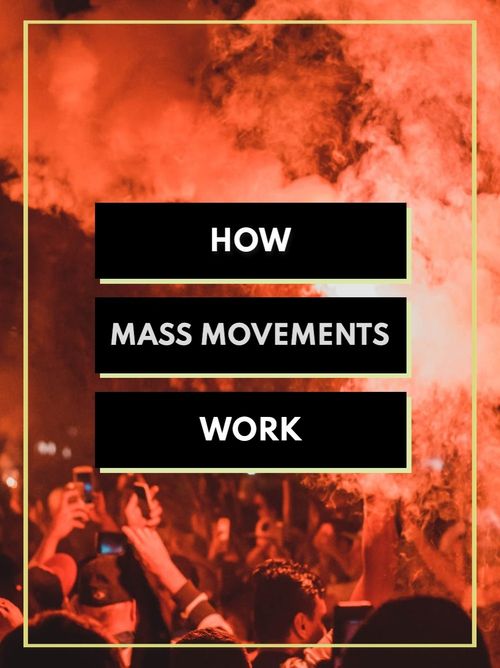The True Believer: How fanaticism fuels mass movements
Nov 11, 2021 · 8 mins read
0
Share

What kind of person becomes a fanatic?
What do cult members and terrorists have in common? A desire for change. That simple motivation is all that’s required to pull someone toward a mass movement and ignite full-blown fanaticism.
Save
Share
This is the main idea behind The True Believer, a landmark psychological study of political fanaticism. Published in 1951 by a San Francisco dock-worker called Eric Hoffer, it quickly became a bestseller – and its insights have only become more relevant today.
Save
Share
Many assume that poverty drives mass movements. In reality, says Hoffer, frustration is the catalyst. Hopelessness is far more miserable than poverty. The middle class or wealthy can have just as many reasons to lose confidence in the present as anyone else.
Save
Share
The French Revolution, for example, occurred in a period of slowly rising prosperity, not poverty. People simply got a taste of what might be theirs and wanted more.
Save
Share
Being a true believer doesn’t necessarily mean being dedicated to a doctrine. People get caught up in movements because of a need to invest themselves in some activity or cause. Its philosophy matters less than the problem it promises to solve.
Save
Share
When the future lacks hope, we search for something or someone that seems to make life worthwhile. The demographic most vulnerable to that need for transformation includes the poor, misfits, minorities, the ambitious, the selfish, and the bored.
Save
Share
The poverty-stricken tend to be resigned to their situation, says Hoffer, and don’t think about change so much. But those who have recently fallen on hard times often feel they’re victims of an unfair system. It’s these people who are drawn to someone calling for change.
Save
Share
During World War Two, for example, the main supporters of the Nazi Party and fascist revolutions were made up of the broken middle-class – many of whom had lost their savings in financial crises. What unified them into a mass movement was hatred.
Save
Share
When we hate something, we naturally look for accomplices with whom we can vent our hatred. Hitler successfully incited anti-Semitism to unite the Germans while also getting Poland, Romania, Hungary, and France (who all harbored anti-Semitic sentiment) onboard.
Save
Share
Yet history has repeatedly proved that we can’t attribute everything to propaganda. It may capture the disillusioned, but it’s unlikely to turn non-believers into followers. This is where persuasion and coerciveness come in – which we’ll explore in Part 2.
Save
Share
0